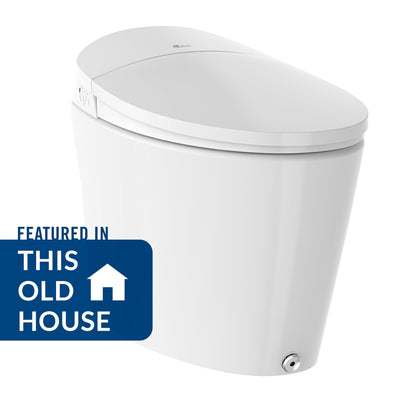Your Kitchen Sink Is Gross

Even if your kitchen sink doesn’t look dirty, it is. That’s because moisture, food debris, soap scum, and everything else you toss in the sink combine to create the perfect environment for bacteria to grow.
There’s so much bacteria living in your sink and on your dish sponge that you’d be better off eating food off your toilet seat!
So, just how dirty is a kitchen sink?
The kitchen sink is so dirty – that it’s the germiest place in your home. A study found that the standard kitchen sink is home to higher concentrations of harmful bacteria, yeast, and mold than anywhere else.
The nasty stuff living in a dirty kitchen sink is a who’s-who disease-causing bacteria, including:
- Salmonella
- coli
- Shigella
- Norovirus
- Hepatitis A
- Campylobacter
Bacteria thrive in kitchens thanks to the prevalence of food, moisture, and comfortable temperatures. These microscopic critters are hardy, too. Salmonella can live on surfaces for several hours, while hepatitis A can survive on dirty countertops of sinks for months.
That’s right. Months.
Where Is the Most Bacteria Found in a House?
If you’re already staring at the sink in disgust, the worst culprit is in sight: Dish sponges or dishcloths have the highest concentration of bacteria of any item in your home. A damp cloth can grow harmful levels of salmonella overnight, even if you rinse and wring it out. Use a fresh towel or sponge every two or three times you do dishes or wipe a countertop to reduce the risk of illness. If you’re cleaning up meat, poultry, or eggs, swap out that rag right away.
You can limit exposure even more by touching your faucet a lot less. Touchless faucets automatically turn on and off, reducing the number of times you contact germy surfaces like the handle.
How often do you need to clean your sink?
Giving your sink a good scrub is just the start; experts recommend sanitizing your kitchen sink at least once a week.
Plan on sanitizing your sink every week and every time you handle or rinse raw meat or poultry. Luckily, sanitizing your sink to kill the colonies of bacteria thriving on the faucet, drain cover, and the surface is quick and easy.
How to Sanitize a Kitchen Sink in 5 Easy Steps
Here’s a quick step-by-step:
- Fill your sink with warm water.
- Add a small amount of bleach; a tablespoon or two should do it.
- Mix the bleach around and let it sit for 5-10 minutes.
- Wet a clean cloth in the bleach solution and wipe down the faucet, handle, and sprayer.
- Drain the sink and give it a good rinse with the sprayer.
Regular cleaning and sanitization are the best ways to get rid of germs in the house. That includes your sink, countertops – and hands. While only about 9 percent of foodborne illnesses are caused at home, scientists think the true number is much higher.
Make sure everyone in your home is committed to the following:
- Washing their hands after using the bathroom and before cooking, eating, or emptying the dishwasher
- Using clean towels to dry their hands or dishes
- Disinfecting countertops before preparing food
Whole-home Hygiene with Bio Bidet by Bemis
Bring home a FLOW faucet to level up your hand hygiene. You can maintain the same high standards in the bathroom, too! Check out the Grove Motion-Activated Faucet for the bathroom and go touchless in the rooms where it matters most.
We’re here to help; reach out with product or installation questions.




